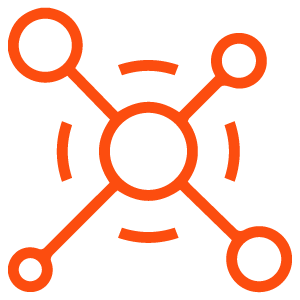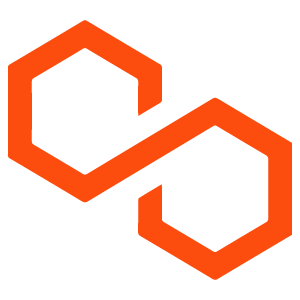#Google #Ads #Traditional #Advertising #Business
In the rapidly evolving landscape of marketing and advertising, businesses of all sizes grapple with the question of how to effectively allocate their advertising budgets. The rise of digital marketing, particularly platforms like Google Ads, presents a stark contrast to traditional advertising channels such as print, television, and radio. Both methods have their unique advantages and challenges. This article explores the differences between Google Ads and traditional advertising, helping business owners determine the best approach for their marketing needs.
Understanding Google Ads and Traditional Advertising
What are Google Ads?
Google Ads is an online advertising platform developed by Google, where businesses can create ads that appear in Google’s search results and on other affiliated websites. With various ad formats—including text ads, display ads, shopping ads, and video ads—Google Ads facilitates a pay-per-click (PPC) approach where advertisers only pay when a user clicks on their ad. The platform operates primarily on a bidding system based on keywords, allowing businesses to target specific audiences based on their search queries and online behavior.
What is Traditional Advertising?
Traditional advertising encompasses a broad range of marketing and promotional strategies that have been used for decades. This includes print ads (newspapers and magazines), broadcast ads (television and radio), billboards, direct mail, and event sponsorships. Traditional advertising often reaches a mass audience, aiming to create brand awareness and drive sales through repeat exposure. While traditional media can be effective, it is often less targeted than digital advertising.
Advantages of Google Ads
1. Precise Targeting
One of the most compelling advantages of Google Ads is its ability to target specific audiences with precision. Advertisers can leverage data on user behavior, demographics, and location to display relevant ads to potential customers. For instance, businesses can target users who are actively searching for their products or services, increasing the likelihood of conversions.
2. Measurable Results
Google Ads provides real-time analytics and reporting tools. Advertisers can track various metrics, such as click-through rates (CTR), conversion rates, and return on ad spend (ROAS). This data allows businesses to adjust their strategies on the fly, optimizing their campaigns for better results.
3. Budget Control
With Google Ads, businesses have full control over their advertising budgets. Advertisers can set daily budgets and adjust bids according to performance. This flexibility allows companies of all sizes, from startups to established enterprises, to participate in digital advertising without overspending.
4. Faster Results
Unlike traditional advertising, where campaigns may take time to plan and execute, Google Ads can generate immediate traffic and visibility. Once a campaign is live, businesses can start seeing clicks and conversions almost instantly.
5. Diversity of Ad Formats
Google Ads offers a range of ad formats, including search ads, display ads, video ads, and app ads. This versatility enables businesses to reach customers through different channels, catering to varying preferences and consumption habits.
Advantages of Traditional Advertising
1. Brand Visibility and Credibility
Traditional advertising, especially through well-established mediums like television and print, can enhance brand visibility and credibility. A commercial during a popular television show can leave a lasting impression, fostering familiarity and trust in the brand over time.
2. Tangibility
Printed advertisements, such as brochures and flyers, provide a tangible experience for consumers. People often hold onto these materials, which can lead to prolonged exposure to the brand. In contrast, digital ads can be more easily overlooked or ignored.
3. Mass Reach
Traditional advertising channels often have a broader reach than specific online campaigns, making it suitable for businesses aiming to target a diverse audience. For example, radio ads can reach commuters from various demographics, and billboard ads attract attention from passing motorists.
4. No Ad Blockers
One significant challenge for digital advertising is the prevalence of ad blockers, which can hinder the effectiveness of online campaigns. Traditional advertising does not suffer from this issue, as consumers cannot easily ignore television commercials or print ads.
5. Emotional Impact
Traditional advertising, particularly television ads, can evoke emotions in a way that is challenging to replicate in digital formats. Storytelling through visuals and sound can create a deeper emotional connection with the audience, helping to shape brand perception.
Challenges of Google Ads
1. Competition and Costs
As more businesses invest in Google Ads, the competition for keywords can become intense. High competition can drive up the cost-per-click (CPC), potentially making it challenging for new businesses or smaller enterprises to compete effectively.
2. Complexity and Learning Curve
For those unfamiliar with digital advertising, building a successful Google Ads campaign can be complex. Mastering the platform requires time, knowledge of search engine optimization (SEO), and ongoing management to optimize campaigns continuously.
3. Ad Fatigue
Digital audiences are exposed to numerous ads each day. This saturation can lead to ad fatigue, where users become desensitized to ads, resulting in decreased click-through rates and overall engagement.
Challenges of Traditional Advertising
1. High Costs
Traditional advertising can be prohibitively expensive, especially for small businesses. Costs for TV and radio spots, print ads in respected publications, and outdoor advertising can quickly add up, making it less accessible for smaller budgets.
2. Limited Tracking and Analytics
Measuring the effectiveness of traditional advertising is far more challenging than digital options. While some tools exist for tracking responses to print or TV ads (like unique phone numbers or codes), quantifying the success of a traditional campaign can be difficult.
3. Longer Lead Times
Developing a traditional advertising campaign often requires significantly more time than a digital campaign. Planning, designing, and executing a TV commercial or a print campaign can take weeks or even months.
4. Every Audience is Different
The effectiveness of traditional advertising can vary greatly based on the target audience. What works for one demographic may not resonate with another, requiring businesses to conduct thorough market research to ensure their ads reach the right people.
Which is Right for Your Business?
Determining whether Google Ads or traditional advertising is better for your business depends on several factors, including your target audience, marketing goals, budget, and industry.
Consider Your Audience
Understanding your target audience is crucial. If your audience is primarily younger, tech-savvy individuals, Google Ads may be more effective due to their frequent online activity. Conversely, if your audience skews older or is less likely to engage with digital media, traditional advertising may yield better results.
Define Your Goals
Establish clear marketing objectives. If your goal is brand awareness and building credibility over time, traditional advertising can play a key role. However, if you’re focused on generating leads quickly or promoting specific products, Google Ads will likely be more effective.
Assess Your Budget
Evaluate your advertising budget. Google Ads offers more flexibility for small businesses, allowing them to control their spending closely. Traditional advertising might require a more substantial upfront investment, which could be a barrier for smaller enterprises.
Measure What Works Best
If possible, test both methods in a scaled approach to see which performs better. Combined strategies can often yield optimal results, enhancing brand visibility while driving immediate sales.
The Future of Advertising
As technology and consumer behavior evolve, so too will advertising strategies. The increasing importance of integrated marketing approaches adopts a holistic view of both traditional and digital advertising. Businesses that blend both strategies are poised to tap into the advantages of each medium, maximizing their reach and effectiveness.
Conclusion
Choosing between Google Ads and traditional advertising requires careful consideration of your business’s specific context. Both methods offer unique benefits and challenges. Google Ads excel in targeting, measurable results, and immediate returns, while traditional advertising provides broader reach, brand credibility, and tangible marketing materials. The ideal strategy often lies in understanding the market, defining clear goals, and harmonizing both approaches for a comprehensive marketing plan.
Frequently Asked Questions (FAQs)
Q1: What is the primary difference between Google Ads and traditional advertising?
A: The primary difference lies in the medium and approach. Google Ads utilizes online platforms for targeted digital advertising based on search queries, while traditional advertising encompasses offline channels, such as print and broadcast media, focusing on broad audience reach.
Q2: Which is more cost-effective, Google Ads or traditional advertising?
A: Google Ads can be more cost-effective for smaller businesses due to its flexibility in budgeting and pay-per-click model. Traditional advertising usually requires larger upfront costs, which can be prohibitive for some businesses.
Q3: How can I measure the effectiveness of my advertising campaigns?
A: Google Ads provides extensive analytics, including click-through rates, conversion rates, and return on investment data. For traditional advertising, measurements can be more complex, often relying on metrics like response rates, brand recognition surveys, or unique promotional codes for tracking.
Q4: Can both Google Ads and traditional advertising work together?
A: Yes, combining both strategies can often yield better results. Using traditional advertising for brand visibility while employing Google Ads for targeted sales can create a balanced marketing approach.
Q5: How long does it take to see results from Google Ads?
A: Google Ads can generate results almost immediately after a campaign is launched, though optimizing campaigns for effectiveness can take time based on performance data and adjustments.
Q6: What industries benefit most from Google Ads?
A: Industries such as e-commerce, travel, local services, tech products, and any business with a strong online presence often see significant benefits from Google Ads due to their digital focus and targeted approach.
By understanding the dynamics of both Google Ads and traditional advertising, businesses can make informed decisions tailored to their unique contexts, ensuring they effectively reach their audiences and achieve their marketing goals.
I see that you provided a placeholder “[article_title]” instead of a specific topic. To help you effectively, could you please provide a specific title or topic you want me to write about? This way, I can create content that meets your needs!








